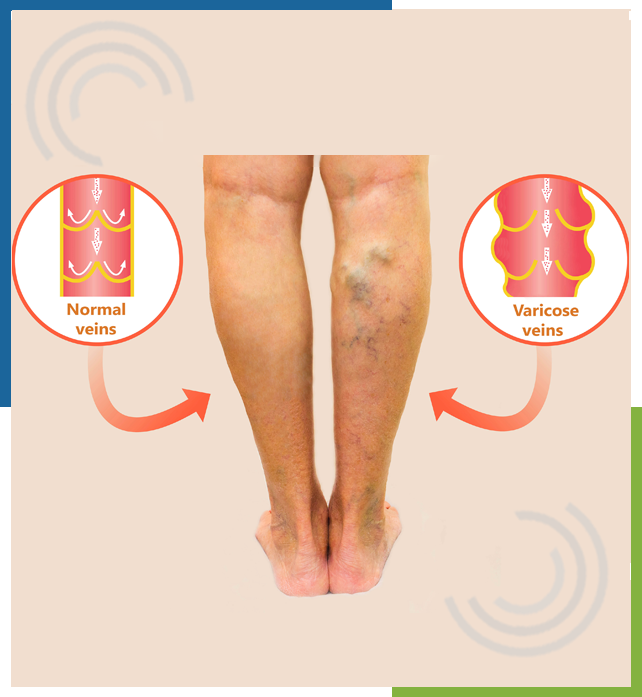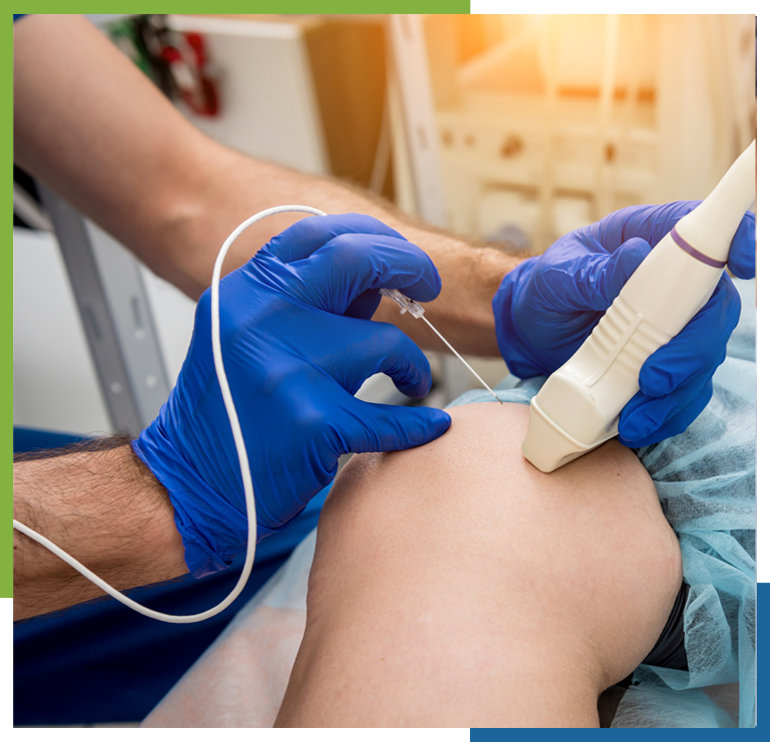Say Goodbye to Painful Varicose Veins with Minimally Invasive Treatment
Safe, effective, and non-surgical solutions for varicose veins with expert care you can trust.
Safe, effective, and non-surgical solutions for varicose veins with expert care you can trust.
Our team collectively has experience in treating hundreds of patients with endovascular ablation. These are the most advanced minimally invasive non surgical techniques and are far better than surgical methods
Varicose veins are swollen, twisted veins that typically appear on the legs due to poor circulation. While often a cosmetic concern, they can also cause discomfort, swelling, and skin changes if left untreated.
Several factors can contribute to the development of varicose veins, including


At Lumina Interventional Radiology, we offer treatments for varicose veins at different severity levels. Our specialists assess each case to find the best solution.
Compression stockings help improve circulation by applying gentle pressure to the legs. They can reduce swelling and discomfort but do not remove varicose veins or address the underlying issue. This option is best for mild cases or as a temporary measure before a more permanent treatment.
Vein stripping is a surgical procedure that removes the affected vein through small incisions. It is performed under general anaesthesia and requires a longer recovery time. While effective, it is now less commonly used due to the availability of minimally invasive treatments with shorter downtime and lower risks.
Endovenous thermal ablation is a minimally invasive procedure and the gold standard for varicose vein treatment. It uses radiofrequency or laser energy to seal the damaged vein, allowing blood to flow through healthier veins. The procedure is performed under local anaesthetic, takes less than an hour, and has a high success rate with long-term effectiveness.


| Treatment Option | Invasiveness | Recovery Time | Effectiveness |
|---|---|---|---|
| Compression Stockings | Non-invasive | Immediate use | Symptom relief only |
| Vein Stripping | Surgical | Weeks | Permanent removal |
| Endovenous Thermal Ablation | Minimally invasive | Days | Highly effective |
Vein disease is a progressive condition. If left untreated, it can lead to serious complications, including infection, skin discolouration/ thickening, blood clots, and ulceration. An ulcer is an open, non-healing wound that occurs on the lower leg, often around the ankle. Eighty per cent of all ulcers are due to vein disease.
No. Although many patients are referred to us by their GPs, we do not need a referral. We will keep your doctor updated with consultations, treatments, and follow-ups.
Not all patients are the same. Together with the consultation and the detailed ultrasound mapping of the veins in the leg we tailor the best treatment plan personalised to you.
In experienced hands, the procedure will take less than an hour for one leg. Additional treatments may be performed at follow-up appointments and are included in the cost of treatment.
The procedure is performed with local anaesthesia. The majority of patients do not experience any discomfort. Light sedation can be given to help with any anxiety during the procedure.
You should be able to resume your normal daily activities shortly after the treatment and get back to work the day after the treatment. More strenuous exercise (running and weight training) should usually be avoided for 2 weeks to enable time for healing and the veins to remain closed. To prevent the risk of infection, baths, hot tubs, and swimming should be avoided for 10 days.
It is normal for the treated veins to feel lumpy and hard. Bruising sometimes occurs over the treated veins. These take around 3 to 6 months to settle down. Any discomfort is helped with by the compression stocking, paracetamol and anti-inflammatories.
After the procedure, we will put your leg in a thigh-high graduated compression stocking. This helps prevent the treated veins from reopening and will need to be worn for at least 10 days. We recommend and encourage walking to help circulate blood through the deep veins of the leg. More strenuous exercise (running and weight training) should usually be avoided for 2 weeks to enable time for healing and the veins to remain closed.
Yes. Our nurses will contact you a few days after the procedure, and we routinely see you back in the clinic approximately 6 weeks after your treatment. We will perform an ultrasound to ensure the treatment has been effective and perform any additional treatments during this visit if necessary. This is at no additional cost.
Over 250 international studies have shown that endovenous ablation is very effective and better than traditional surgical interventions, with excellent long-term success. It is important to understand that varicose veins are a progressive disease. We treat the problematic veins; however, it depends on the individual patient, their genetics, and lifestyle as to whether other varicose veins develop over time.
Most insurers will cover varicose vein treatment, depending on your plan. We are Southern Cross affiliated.